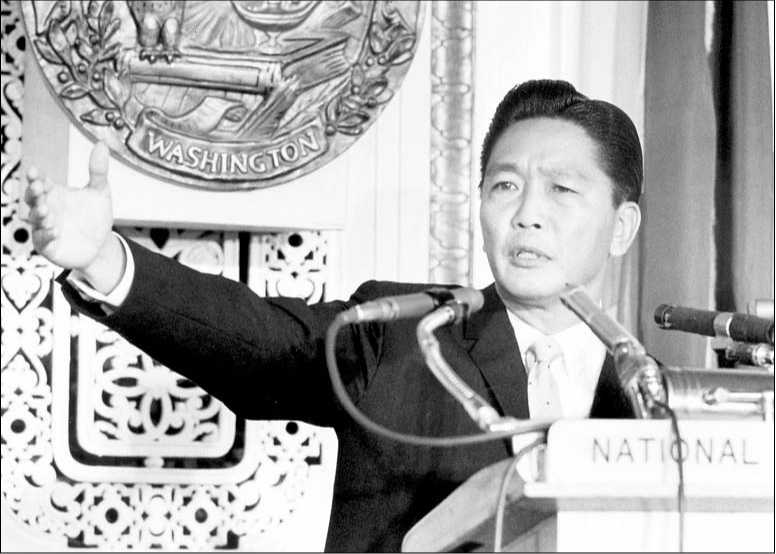Ferdinand Marcos began his rise to political power in the Philippines by presenting himself as a leader of a band of antiJapanese guerrillas during the war. It appears that Marcos did initially fight against the Japanese when Japan invaded the Philippines. Most historians believe, however, that the paramilitary group that Marcos came to head during the Japanese occupation at various times fought with the Japanese, collaborated with them, and engaged in banditry.
(June 21) Abu Sayyaf leader and spokesman Aldam Tilao, known as Abu Sabaya, is reportedly killed in a fight with Filipino soldiers in boats off the coast of Zamboanga del Norte; however, some observers report seeing him alive during the following months.
(Aug. 20) Abu Sayyaf guerrillas kidnap six Filipino members of the Jehovah's Witnesses; two days later, severed heads of two kidnap victims are found in an open-air market, along with letters calling for holy war.
(Oct. 2) Nail bomb explodes in Zamboanga City in the southern Philippines a week after Khaddafy Janjalani, supreme commander of Abu Sayyaf, calls on all believers to strike out against those whom he calls the enemies of Islam; an American soldier, a Filipino citizen, and twenty-one other people are killed.
(Feb. 13) Government expels Iraqi diplomat Husham Husain on grounds of having ties to Abu Sayyaf, a Philippine Islamic terrorist group linked to al-Qaeda.
(Feb. 20) U. S. government announces it will soon send American troops to fight against Muslim rebels in the southern part of the Philippines.

Philippine president Ferdinand Marcos speaking in Washington, D. C., around 1970. (Library of Congress)
Of men from his province of Ilocos certified as freedom fighters, making them eligible for American financial payments. This created a political base, which helped him win election to the Philippine congress in 1949, 1953, and 1957.
In 1964 Marcos was elected president of the Philippines. He was a skilled politician and became powerful by making strategic allies, by turning rival political figures against one another, and by maintaining close ties with the Americans. He and his popular wife, Imelda, also received a great deal of support from ordinary Filipinos. His government engaged in extensive public works, building roads, schools, and other facilities. Marcos attached his and Imelda's names to these works so that it appeared that people in the countryside were receiving the roads and schools as gifts from the Marcoses.
Marcos faced a problem as his second term drew to an end in
1972. The Philippine constitution did not allow any president to serve more than two terms. He thus would have to change the entire political system to stay in power. Therefore, he staged the discovery of a boat loaded with guns, supposedly bound for the Communist New People's Army. July and August saw an outbreak of bombings, which Marcos blamed on the communists but which now appear to have been the work of the president's agents. Claiming the country was in danger of a communist takeover, he declared martial law on September 21, 1972.
President Marcos immediately imprisoned his political opponents, including the outspoken Benigno Aquino. Although the communists were actually weak at the time, Marcos used them as an excuse to declare martial law. Opposition to his seizure of power led to a continual growth in the communist guerrilla forces. The greatest threat to the Marcos government came from the alliance of the Communist Party of the Philippines (CPP) and the New People's Army (NPA), but Marcos also faced a serious challenge from a Muslim rebellion in the south of the country.




 World History
World History









